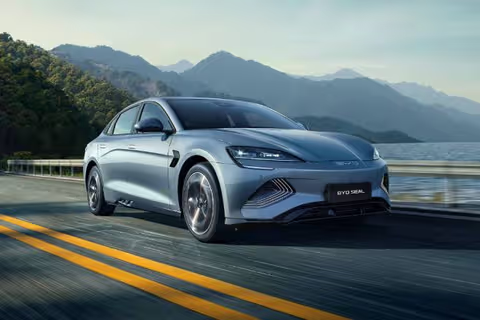Speeding Ahead, Insured Behind: Nepal’s EV Revolution Needs Protection

Kathmandu – As Nepal’s streets hum with the quiet promise of electric vehicles (EVs), another shift is gaining traction beneath the surface — one that’s less visible but equally vital. The rise of EV insurance is quietly rewriting the rules of risk, reward, and responsibility on the road.
Electric mobility is no longer a niche conversation in Nepal. In the past two years alone, EV imports have skyrocketed, with industry estimates suggesting they now account for over 60% of new car sales. What began as a push for environmental sustainability supported by tax exemptions and rising fuel costs has grown into a full-fledged consumer movement. But as the number of EVs on the road increases, so does the complexity of protecting them.
Why EVs Demand a Different Kind of Insurance
Unlike petrol or diesel vehicles, electric cars are built around expensive, high-tech components — none more vital or costly than the battery. Prone to degradation, fire risk, and expensive replacement (sometimes exceeding 40% of the car’s value), batteries are at the heart of the EV insurance challenge.
Nepal’s current motor insurance policies still largely reflect a one-size-fits-all approach. For EV owners, that can mean unclear coverage, limited liability protection for battery damage, and no support for charger-related incidents or advanced driver-assistance systems.
Global Momentum – A Lesson in Innovation
Worldwide, insurers are already racing to meet the EV moment. In China, EVs made up more than a quarter of all insured vehicles by 2023. The Asia-Pacific region, where EV adoption is accelerating, is predicted to dominate the global EV insurance market over the next decade. Insurance giants across Europe and North America are also launching dedicated EV coverage that includes battery protection, roadside charging assistance, and even telematics-based discounts for energy-efficient driving. In neighbour country India, EV insurance market isn’t just growing, its exploding with demand surge reaching 16x in just three years.
Usage-Based Insurance (UBI) is also becoming popular globally. By using telematics to track vehicle usage, driving behaviour, and energy efficiency, insurers can offer customised premiums — a model that could greatly benefit Nepal’s growing EV owner base.
Key Issues in EV Insurance in Nepal
EV insurance in Nepal faces several key challenges as the electric vehicle market grows.The high cost and complexity of EV batteries, often the most expensive part of the vehicle, are not clearly addressed in current policies. There’s also a lack of standardized regulations, causing inconsistency across insurers. Limited public awareness adds to the problem, with many owners unsure of what their policies actually cover.
The Nepal Automobile Dealer’s Association (NADA) has also addressed the problems like difficulties in determining the right value of electric vehicles and has raised concerns about battery coverage and after-sales insurance claims. Additionally, NADA has also urged Nepal Insurance Authority (NIA) to make insurance more flexible.
What Needs to Happen Now
Nepal’s insurance industry is beginning to respond with purpose. Some non-life insurers have started introducing EV-specific products that address new realities — from battery coverage and roadside charging issues to liability during home charging station failures. However, to keep pace with its growing EV ecosystem, Nepal must develop a unified EV insurance framework. This begins with policy standardization and regulatory oversight that ensures a minimum level of safety and coverage for electric vehicles.
The government, insurers, and EV stakeholders should work together to encourage innovation, design flexible and fair coverage models, and raise public awareness around EV insurance rights and responsibilities.
The Road Ahead – Hope for the Future
As Nepal positions itself in South Asia’s electric transition, the need for a parallel evolution in the insurance sector is undeniable. Creating EV-specific policy standards, increasing insurer capacity to handle battery-related claims, and investing in awareness campaigns will be key to maintaining consumer trust and safety.
Giving a light in the EV insurance market, the recent meeting between NADA and NIA, Chairman Sharad Ojha, promised to work hand in hand together to improve insurance policy framework and has assured that the Authority is working on the solutions. He also agreeed on a different insurance approach giving a hope for the improvements in the EV insurance in the future.
